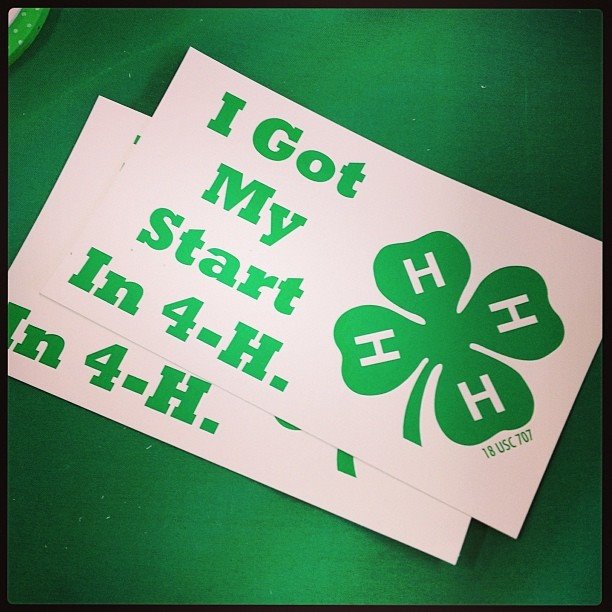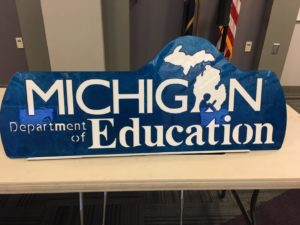National youth program’s ‘Thriving Model’ is grounded in equity, CRT, and Marxism
(The Sentinel) – In the spring of 2013, 4-H launched a nationwide program of youth development called the “Thriving Model,” which appears grounded in equity, Marxism, and tenets of critical…

(The Sentinel) – In the spring of 2013, 4-H launched a nationwide program of youth development called the “Thriving Model,” which appears grounded in equity, Marxism, and tenets of critical race theory.
Indeed, last week’s story about a 4-H policy that assigns campers to dormitories based on the gender with which a child identifies rather than their biological sex at birth prompted emails from 4-H parents in several other states.
One parent wrote, “We have been dismayed by National 4-H’s active stance on encouraging youth to take up the LGBTQ agenda, train 4-H volunteers in CRT, and to alter 4-H policies to accommodate creative pronouns, abolish dress codes and to allow kids to bunk with whatever gender they subjectively identify as.”
Originally developed at Oregon State University by Dr. Mary Arnold, the Thriving program was fully rolled out and was adopted over the next several years.
4-H is the youth development program of the United State Department of Agriculture’s Cooperative Extension system, which links USDA with Land-Grant Universities across the country and down to local extension offices where 4-H is based.
The model champions what it calls “Positive Youth Development” and purports to be a “science-based” program to “help ensure that 4-H programs provide a nourishing developmental context – a place where youth can belong and grow.”
However, the national organization’s various websites — particularly those of the Extension Committee on Organization and Policy, as well as the Program Leaders Working Group, are littered with references to diversity, equity, inclusion, intersectionality, advocacy, and a host of other “woke” buzzwords.
Paper explicitly links 4-H Thriving Model with Marxism
A 2020 paper by the University of Maryland’s assistant director of Extension and State 4-H leader Dr. Nia Imani Fields, entitled Exploring 4-H Thriving through an Equity Lens for the National 4-H Council’s Extension Committee on Organization and Policy, openly reflects the policy shift that has parents upset. It not only ties DEI and Social Justice to Marxism but explicitly states that the classroom has been a good model for how these ideas can be expanded — and suggests that 4-H has been a tool of oppression.
“In order to enact equitable practices, one must understand oppression and privilege,” Fields writes. “Oppression describes the discrimination of one societal group for the benefit of another. Oppression is established and maintained through institutional systems and power — which is held by dominant cultures in our society.
“In American culture, dominant identities include: White, middle class/wealthy, heterosexual, men, Christian, people with college degrees, people with full physical and mental ability, American citizens, and English speaking people.”
Fields goes on to state that 4-H must look at youth development with a “social justice mindset”
“Social justice youth development offers a way to foster critical consciousness among young people while encouraging them to act toward achieving a sociopolitical vision,” she writes before beginning to discuss “Critical theories” and “Critical pedagogy.”
“Critical theories and pedagogy challenges (sic) the traditional hegemonic ways in which society creates, teaches, makes meaning of, and challenges knowledge,” the paper reads. “Critical pedagogy seeks to utilize education as a form of liberation from oppression. This pedagogy was birthed from many theoretical perspectives including Marxism, Freiran philosophies of liberation, and the Frankfurt school of critical theory.” (emphasis added)
She continues: “While Marxism was not originally rooted in education, it has many connections to the classroom. The classroom is a microcosm of the larger economic and political society as they reproduce the attitudes and dispositions that are required for the continuation of the present system of domination by the privileged class.”
She also praises Freierian philosophy.
Paulo Freire was a Brazillian philosopher of education in the 20th century and a leading advocate of critical pedagogy. His influential work Pedagogy of the Oppressed is generally considered one of the foundational texts of the critical pedagogy movement and was the third most cited book in the social sciences as of 2016, according to Google Scholar.
Where Freire assumed oppression in education, Fields cites his work to assume oppression in 4-H.
“Freierian philosophy focuses on education as a process of conscientization — that is, a process through which one develops an awareness and understanding of their oppression. This student-centered teaching approach fosters an open dialogue where students discuss common issues and make connections to the larger societal norms. Within the Freierian model, the teacher does not simply accept the status quo and deposit meaningless learning into students. Rather, the teacher becomes a conduit between student enlightenment and student praxis — refection (defined as “refreshment of mind, spirit or body: ed) and action towards liberation.”
While maintaining the pretense that she is referring only to 4-H, much of Fields paper is directed toward education as a whole.
Indeed Fiels goes on to discuss Culturally Relevant Teaching (which closely resembles Critical Race Theory, except explicitly focused on education rather than the law) and “culturally relevant positive youth development.”
“Positive youth development (PYD) models that are not culturally relevant run the risk of maintaining societal forces of privilege and dominance,” Fields writes. “Ginwright and Cammorota (2002) expound on this idea by stating: ‘… current formulations of positive youth development are based on unrealistic, white middle-class conceptions of youth. This view of youth homogenizes their experiences, simplifies their identities, and conceptualizes them through one dominant cultural frame. Consequently, the relevance of culture, race, class, gender and sexual identity in the positive youth development model are (sic) never fully developed.’”
As the Sentinel reported earlier this month, 4-H at both the national and state level has already taken it upon itself to make sure “gender” and “sexual” identity are fully developed, promulgating a national policy requiring campers to be housed according to gender identity without regard to biological sex, and promoting “Pride Month” with merchandise, prompting one Kansas family to start a separate organization.
Fields concludes: “4-H must intentionally and systematically use critical pedagogical approaches that foster equity and thriving outcomes for all youth—particularly those who have been marginalized by systems of oppression. … if we can better connect youth to their community in meaningful and purposeful ways, we improve our chances of creating the environments where youth feel a sense of efficacy, belonging, and responsibility to their world. The 4-H Thriving Model presents an opportunity for PYD professionals to explore the process and outcomes of PYD through a holistic lens. However, if the model is not explored and applied through an equity lens, it runs (the) risk of further perpetuating injustices that exist within PYD programs and within society. If 4-H harnesses the opportunity to nurture youth’s sparks through culturally relevant engagement and empowers youth to see the world as bigger than themselves — then 4-H stands a chance to keep our promise to America’s youth while collectively working towards a more just society.”
Taken as a whole, the “Thriving Model” apparently seeks to be more than simply a youth development program, but a way to completely reshape youth along a “social justice” model, rather than teaching the life and farm skills — both in rural and urban areas — for which 4-H has so long been justly famous.



